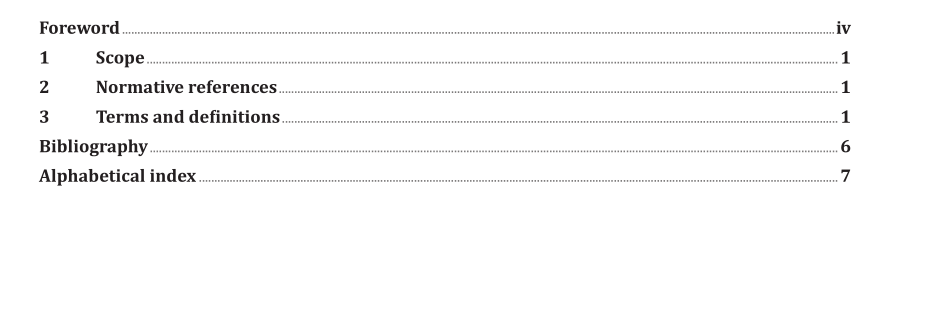ISO 25947-1:2017 pdf download – Fireworks — Categories 1, 2 and 3 — Part 1: Terminology.
3.16 first? principal? effect principal effect (3.32) of a firework (3.15) which is the first to occur during the functioning of the firework 3.17 friction head ignition head (3.18) designed to be ignited by friction 3.18 ignition head initial fuse (3.20) consisting of pyrotechnic composition (3.36) only 3.19 initial fuse burning burning which immediately follows ignition and precedes any effect 3.20 initial fuse component of a firework (3.15) which is ignited in order to start the firework functioning 3.21 invisible burning time time between the preliminary effect (3.30) and first principal effect (3.16) 3.22 invisible burning burning occurring within the firework (3.15) which is not visible to the person who ignited the firework 3.23 major nonconforming unit nonconforming unit (3.28) with one or more major nonconformities (3.24), with or without minor nonconformities (3.26), but with no critical nonconformities (3.7) 3.24 major nonconformity nonconformity (3.29), other than a critical nonconformity (3.7), which is likely to result in failure, to reduce materially the usability of the firework (3.15), or to increase the potential hazard Note 1 to entry: This type of nonconformity is referred to as a “class B nonconformity” in ISO 2859‑1:1999. 3.25 minor nonconforming unit nonconforming unit (3.28) with one or more minor nonconformities (3.26), but with no critical (3.7) or major nonconformities (3.24) 3.26 minor nonconformity nonconformity (3.29) that is not likely to reduce materially the usability of the firework (3.15) Note 1 to entry: This type of nonconformity is referred to as a “class C nonconformity” in ISO 2859‑1. 3.27 net explosive content NEC mass of pyrotechnic composition (3.36) in the firework (3.15), excluding the pyrotechnic composition in the initial fuse (3.20) or transmitting fuses (3.34), friction or ignition heads (3.18) Note 1 to entry: Net explosive quantity or net equivalent quantity (NEQ), net explosive mass (NEM), or net explosive weight (NEW) are often used to convey the same meaning.
3.28 nonconforming unit firework (3.15) or a primary pack (3.31) with one or more nonconformities (3.29) 3.29 nonconformity non‑fulfilment of a requirement 3.30 preliminary effect visual effect which follows the initial fuse (3.20) burning and precedes the first principal effect (3.16) of a firework (3.15) 3.31 primary pack package of one or more fireworks (3.15) of the same category and type, offered for retail sale as a single unit 3.32 principal effect any of the effects listed in the classification in accordance with ISO 25947‑2 for the particular type of firework (3.15) 3.33 projected debris fragments projected laterally from the firework while functioning 3.34 propellant charge pyrotechnic composition (3.36) which will burn to evolve gas which, in turn, is intended to propel the firework (3.15) as a whole or to expel one or more pyrotechnic units (3.37) without bursting the firework case (3.14), and which can also transmit ignition 3.35 protruding fuse initial fuse (3.20) that extends from the firework case (3.14) and is used to ignite the article with a given time delay 3.36 pyrotechnic composition substance or mixture of substances which is designed, on ignition or initiation, to produce an aural and/or visual effect and/or to evolve gas 3.37 pyrotechnic unit discrete unit that is part of a firework (3.15) which, upon functioning, will burn or explode to produce a visual and/or aural effect Note 1 to entry: The effect produced by a pyrotechnic unit is normally part of a combination of effects produced by the firework. 3.38 report charge pyrotechnic composition (3.36) which, upon functioning, will produce a report 3.39 rocket launcher tube, frame or base from which a rocket can be launched
ISO 25947-1:2017 pdf download – Fireworks — Categories 1, 2 and 3 — Part 1: Terminology






